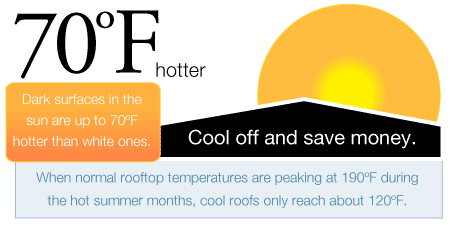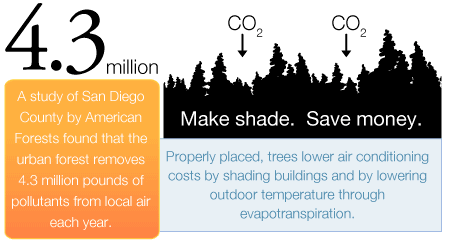City Projects in Energy Efficiency and Conservation
Building Envelope
The building envelope, also referred to as the building shell, consists of all partitions that separate outdoor air and temperature from indoor spaces: windows, doors, walls, roofs and foundation. The building envelope is critical for minimizing the buildup of humidity and uncomfortable drafts. Cool roofs, shade, glazing, quality insulation and an efficient HVAC system can help to keep energy costs from cooling at a minimum. LEED certification is a great way to ensure that your building is energy-efficient. Also see the EPA's Lifecycle Building Challange.
Click here for examples of city green building projects.
To keep conditioned air inside, check and repair any leaks in seals and insulation around building partitions and ductwork in the HVAC system. You can also install high efficiency doors and windows. Glazing or films for windows is another option, particularly for buildings in which window replacement is neither cost-effective nor practical. Glazing lowers the emissivity (i.e. radiation) of surfaces and reduces ultraviolet rays responsible for fading fabrics and furnishings.

Cool roofs
Cool roofs are an excellent option to lower cooling costs for buildings. Cool roofs are roofs with special coatings or surfaces that reflect heat. While this seems simple in concept, the cooling benefits can be quite dramatic. Consider that dark surfaces in the sun are up to 70ºF hotter than white ones – when normal rooftop temperatures are peaking at 190ºF during the hot summer months, cool roofs only reach about 120ºF. The ability of your rooftop to reflect solar radiation and reduce surface temperatures is related to how hard cooling equipment needs to work to condition indoor spaces. Click here for Flex Your Power's Product Guide on cool roofs.
The California Energy Commission’s Building Energy Efficiency Standard, Title 24, includes a cool roof prescription for low-slope (less than 2:12) nonresidential roofs for new construction and major re-roofing. Section 10-113 requires that cool roofs be tested and labeled by the Cool Roof Rating Council.
Shade
Shade is the most cost-effective and simplest way to reduce solar radiation. Architectural elements can be added that shade windows and doors – roof overhangs, light shelves and fins or slats, for example. Trees make great shade, too. Properly placed, trees lower air conditioning costs by shading buildings and by lowering outdoor temperature through evapotranspiration. Trees also provide a significant community benefit by reducing stormwater runoff and trapping air pollutants like carbon dioxide.

A study of San Diego County by American Forests, for example, found that the urban forest removes 4.3 million pounds of pollutants from local air each year – a benefit worth $10.8 million annually. These trees sequester about 9,000 tons of greenhouse gases each year, storing a total of 1.2 million tons.
Read our Local Governments Best Practices Guide for ideas on the building envelope.


